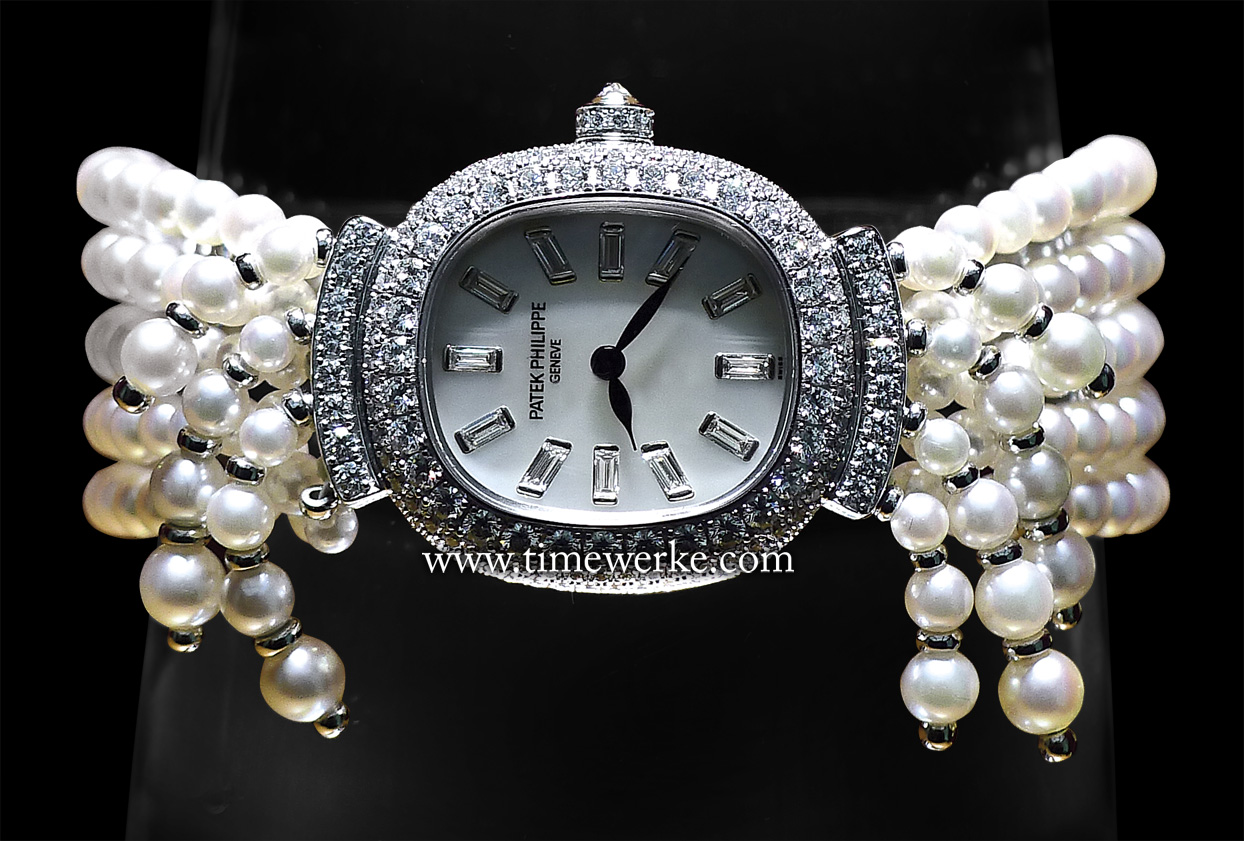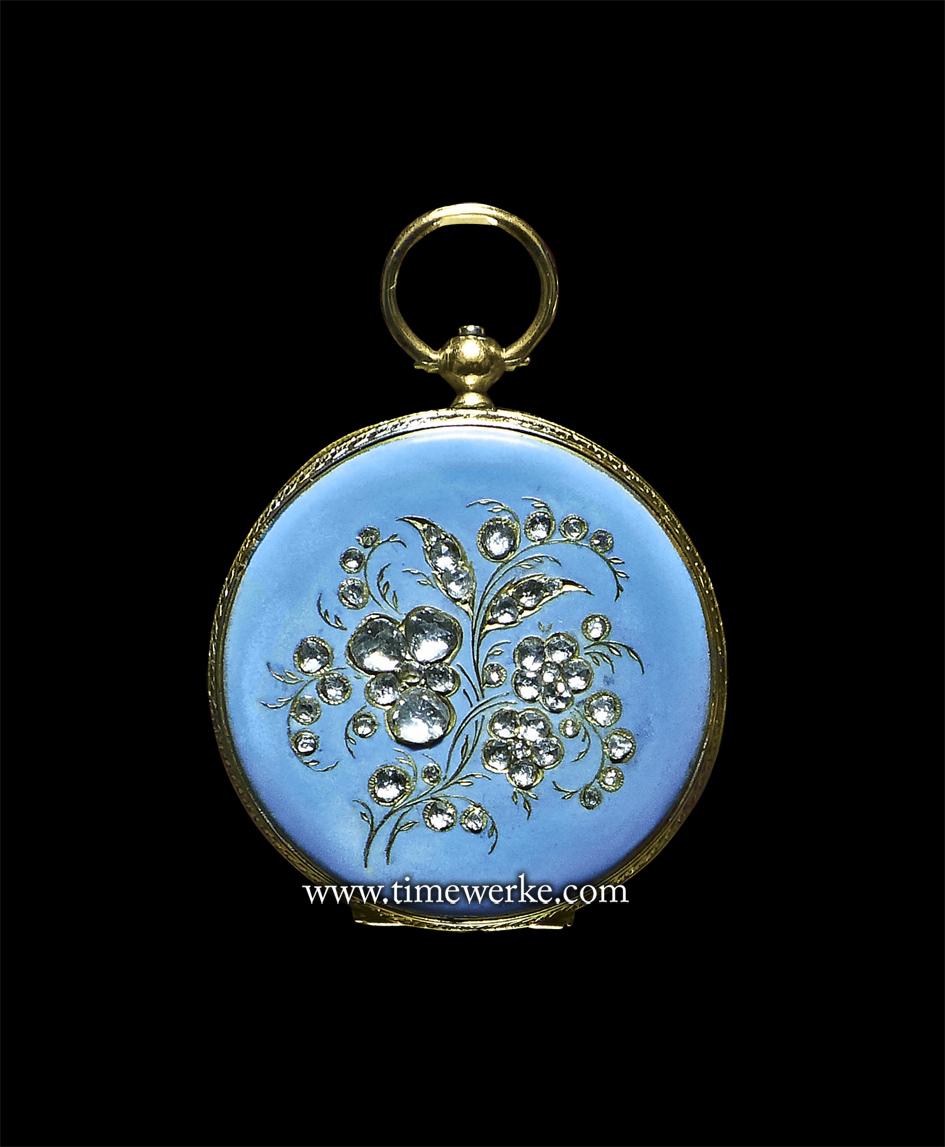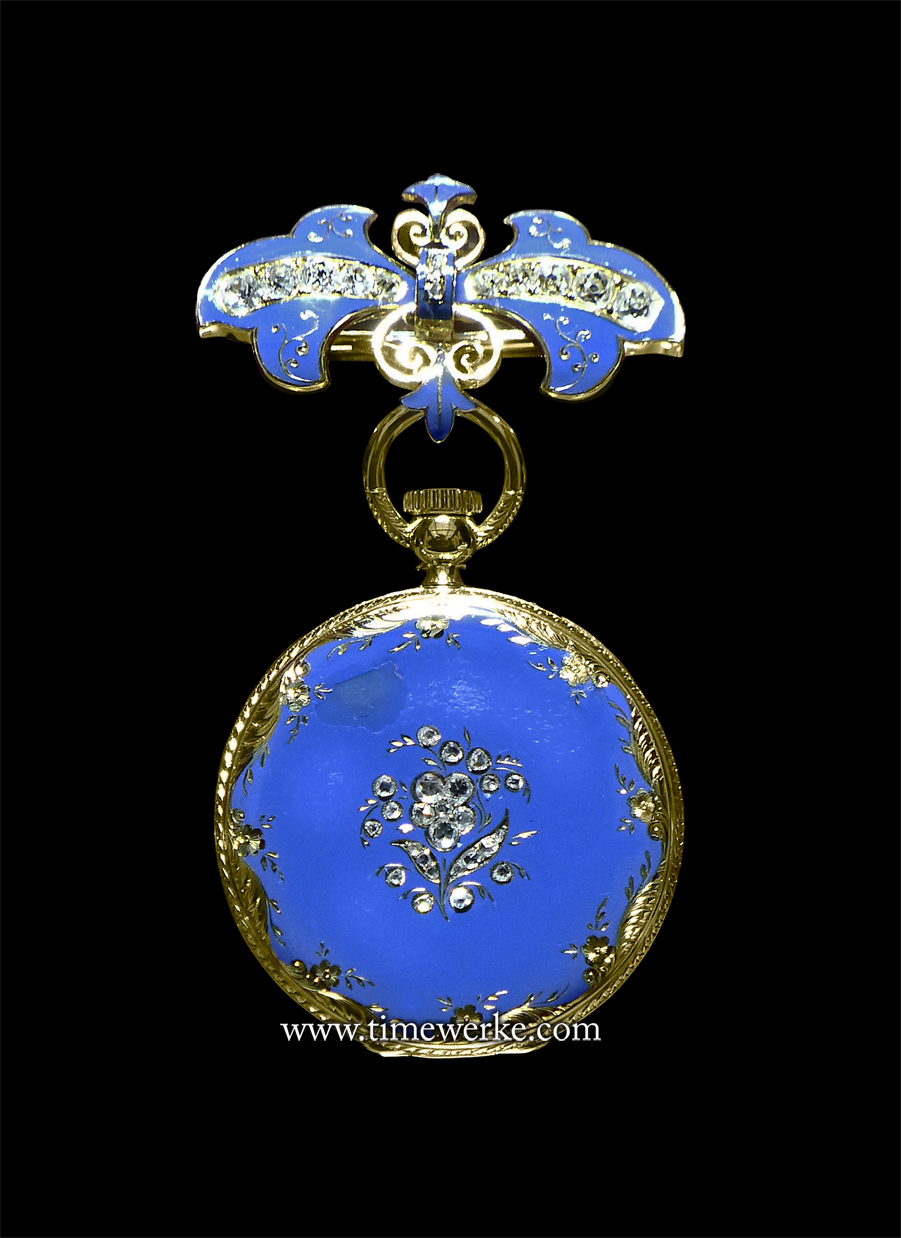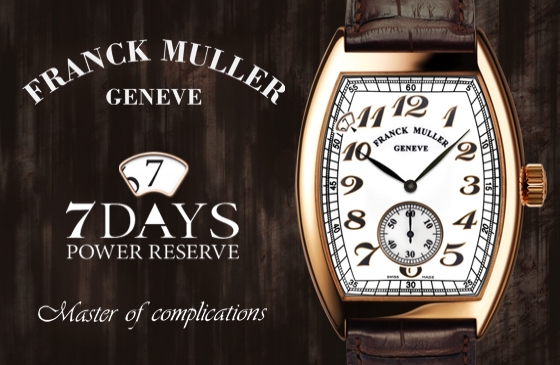
The wristwatch belonging to Her Majesty Queen Elizabeth II – the Patek Philippe Ref. 4975/1G with pearl bracelet at the Patek Philippe Watch Art Grand Exhibition (27 May 2015 to 7 June 2015). This watch is on special loan and will only be on display for the duration of this exhibition. Photo: © TANG Portfolio. Photo taken with a Leica D-Lux 5. Timmy / Elfa. London 2015
From Wednesday, 27 May 2015, to Sunday, 7 June 2015, the Saatchi Gallery in London is a must-visit for all who are interested in timepieces, notably fans and owners of Patek Philippe including those who wish to have an up-close-and personal view of the wristwatch belonging to Her Majesty Queen Elizabeth II – the Patek Philippe Ref. 4975 in white gold.
The Saatchi Gallery, also known as the Duke of York’s HQ and located at King’s Road, is the venue for the Patek Philippe Watch Art Grand Exhibition London 2015. Covering 2,200 square metres of floor space, more than 400 timepieces, the majority of which are from the brand, are on display.
The Queen’s Patek Philippe Ref. 4975/1G with the distinctive pearl bracelet is among the highlights of the Watch Art Grand Exhibition. It was acquired recently, so we were told. This watch is currently on display in what is termed the “Royal Room” at the exhibition and is on special loan from Her Majesty Queen Elizabeth II.
The Royal Room is so-called because this is where, in addition to Her Majesty’s Ref. 4975, more than 15 other Patek Philippe watches that once belonged to royalty are exhibited. These “blued-blooded” timepieces are from the Patek Philippe Museum.

Queen Victoria’s pendant watch (Patek, Philippe & Cie, No. 4719). Open-faced, key-winding and setting yellow gold pendant watch. It houses a 12-ligne LeCoultre & Cie ébauche. The back features a flower bouquet set with rose-cut diamonds on sky-blue enamel. This pendant watch was on display at the London Universal Exhibition in 1851. It was purchased by Queen Victoria on 30 November 1851. Photo: © TANG Portfolio. Timmy / Elfa. London 2015
Two other royal timepieces, displayed together with the Queen’s Ref. 4975 wristwatch, will be the open-faced key-winding yellow gold pocket watch No. 4719 and the open-faced, keyless or stem-winding yellow gold pocket watch No. 4536.
Both were owned by Queen Victoria (1819 to 1901) who was the great-great-grandmother of Queen Elizabeth II.
The key-winding and setting pocket watch No. 4719 was exhibited at the Crystal Palace Exhibition or Great Exhibition held in 1851 in London. This watch caught Queen Victoria’s fancy and was acquired by her on 30 November 1851.
The other keyless pocket or pendant watch No. 4536 was said to have been presented to Queen Victoria at the 1851 Universal Exposition or Great Exhibition in London as well. This pendant watch comes with a matching brooch.

Queen Victoria’s pendant watch (Patek, Philippe & Cie, No. 4536). Open-faced, keyless or stem-winding yellow gold pendant watch with matching brooch. It houses a 13-ligne Patek Philippe ébauche. The back features a bouquet of rose-cut diamond-set roses on lapis blue enamel surrounded by scrolling. This pendant watch was presented to Queen Victoria at the Universal Exhibition in London in 1851. Still regal despite the blemishes. Photo: © TANG Portfolio. Timmy / Elfa. London 2015
The Queen had appointed Patek Philippe as official purveyor of watches to the royal family at this same Great Exhibition.
“Queen Victoria was the first royalty to purchase [Patek Philippe watches]. This [acquisition in 1851] began a line of royal patronage,” highlights Mark Hearn, managing director, Rhone Products (UK) Ltd, who oversees the Patek Philippe business in the United Kingdom.
Indeed, other watches of royalty on display include Patek Philippe timepieces once owned by the King of Denmark Christian IX (acquired by the Queen of Denmark in 1867), George Gregor Cantacuzene, the Prince of Moldavia and Valachia and President of the Council of Romania (acquired in 1869), Oscar II, King of Sweden and Norway and even one purchased by the King of Siam, Chulalongkorn (Rama V), in 1897 which was then presented to John Anderson.
There are actually more than 15 royal reasons to visit the Patek Philippe Watch Art Grand Exhibition London 2015. Theoretically, there are at least 400 reasons because each and every watch on display tells its own story.
As Patek Philippe was established in 1839, there are Patek Philippe timepieces on display from this era, not to mention those non-Patek pieces that date back further, one example being the table clock that comes in the form of a bird cage.
The other key highlights include the brand’s founder Antoine de Patek’s pocket watch, the first wristwatch made by Patek Philippe in 1868 and of course, the brand’s pièce de résistance – the Grandmaster Chime Ref. 5175 which is the most complicated Patek Philippe wristwatch (20 complications) and also the main highlight of its 175th anniversary celebration of its founding (1839 to 2014).
The Patek Philippe Watch Art Grand Exhibition is definitely worth the time and effort for it offers much more than just the brand’s timepieces. For example, there many educational audio-visual displays and live demonstrations as well.
“We really want visitors to know about the history of horology through our own history and [for them to] leave the exhibition with a better general knowledge of watchmaking,” explains Jasmina Steele international communication and public relations director, Patek Philippe.
Patek Philippe’s Watch Art Grand Exhibition is something we highly recommend and this is one opportunity not to be missed. Admission is free and do note that the exhibition ends on Sunday, 7 June 2015 at four pm. For those keen but have yet to visit, make haste for the countdown has begun.


